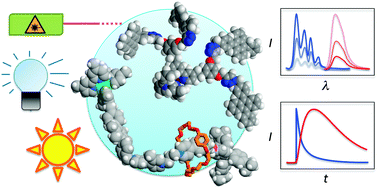Light to investigate (read) and operate (write) molecular devices and machines
Abstract
The development of multicomponent (supramolecular) systems that can perform predetermined functions under external control – i.e., molecular devices – is a challenging task in chemistry and a fascinating objective in the frame of a bottom-up approach to nanostructures. In this context light signals can be conveniently used both for supplying energy to the system and for probing its states and transformations. The aim of this tutorial review is to recall a few basic aspects of light-induced processes that can be used to “write” and “read” onto molecular and supramolecular systems. These principles are illustrated through some examples of artificial molecular devices and machines taken from our work, which provide a flavour of current research. They are molecular and supramolecular systems that operate and/or perform valuable functions by exploiting photoinduced energy- or electron-transfer processes, photoisomerization reactions, or photoinduced proton transfer. The choice of these examples was based on both their intrinsic importance for the referred topic and their educational value. In the last section of the review potential applications, limitations and future directions of the research in the field of artificial molecular devices and machines are also discussed.

- This article is part of the themed collection: Supramolecular Photochemistry

 Please wait while we load your content...
Please wait while we load your content...